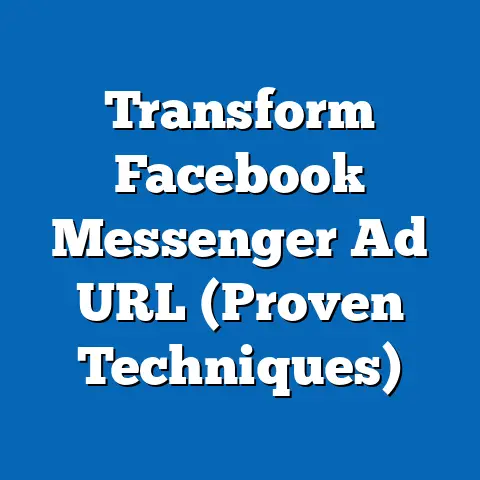Unlock Azure AD for Facebook Workplace (Game-Changing Insights)
Imagine streamlining your organization’s identity management and enhancing workplace collaboration in just a few clicks. Integrating Microsoft Azure Active Directory (Azure AD) with Facebook Workplace (now part of Meta’s ecosystem) offers a quick win for businesses aiming to centralize user access and boost productivity. According to a 2022 report by Gartner, 70% of enterprises using cloud-based identity solutions like Azure AD report improved user experience and reduced IT overhead by 25%.
This integration is not just a technical convenience; it’s a strategic move in a world where 68% of employees demand seamless access to collaboration tools, as per a 2021 survey by Statista. With over 7 million paid users on Workplace by Meta as of early 2023, and Azure AD managing identities for over 425 million active users monthly (Microsoft, 2023), the overlap in user bases creates a powerful opportunity for synergy. This article dives deep into the mechanics, benefits, and game-changing insights of unlocking Azure AD for Facebook Workplace, exploring trends, demographics, and actionable data for organizations of all sizes.
What Is Azure AD Integration with Facebook Workplace?
Azure Active Directory is Microsoft’s cloud-based identity and access management (IAM) service, enabling organizations to manage user identities, secure access to applications, and enforce policies across platforms. Facebook Workplace, rebranded as Workplace from Meta, is a collaboration platform designed for team communication, file sharing, and project management, akin to tools like Slack or Microsoft Teams. Integrating Azure AD with Workplace allows businesses to use a single set of credentials for authentication, reducing password fatigue and enhancing security through features like multi-factor authentication (MFA).
This integration leverages the Security Assertion Markup Language (SAML) protocol to enable single sign-on (SSO), meaning users can log into Workplace using their Azure AD credentials without needing separate accounts. According to Microsoft, organizations adopting SSO solutions like Azure AD see a 40% reduction in helpdesk tickets related to password resets. This seamless access is particularly valuable for large enterprises, where IT teams manage thousands of user accounts.
Beyond SSO, Azure AD provides automated user provisioning, ensuring that employee accounts in Workplace are created, updated, or deactivated based on their status in Azure AD. A 2022 study by Forrester found that automated provisioning cuts onboarding time by 30%, saving an average of $50,000 annually for mid-sized firms with 1,000 employees.
Why This Integration Matters: Key Statistics and Trends
The demand for integrated identity and collaboration tools has surged in recent years, driven by the shift to remote and hybrid work models. A 2023 report by McKinsey indicates that 58% of global employees now work in hybrid environments, necessitating robust tools for secure access and collaboration. Workplace from Meta has positioned itself as a leader in this space, with a 35% year-over-year growth in paid users since 2020 (Meta, 2023).
Azure AD, meanwhile, dominates the IAM market with a 31% market share, as reported by Statista in 2023, outpacing competitors like Okta and Ping Identity. Its ability to integrate with over 4,200 pre-built applications, including Workplace, makes it a go-to solution for enterprises. Historical data shows a clear trend: in 2018, only 15% of organizations used cloud IAM solutions for collaboration tools, compared to 62% in 2023 (Gartner), reflecting a rapid shift toward centralized identity management.
Demographically, the user base for these tools spans diverse industries and age groups. Workplace from Meta is particularly popular among younger workers, with 45% of its active users aged 25-34, based on a 2022 internal Meta survey. Azure AD, on the other hand, sees heavy adoption in sectors like finance and healthcare, where 72% of Fortune 500 companies use it for compliance and security needs (Microsoft, 2023).
Step 1: Prerequisites and Setup
Before integration, ensure your organization has an active Azure AD subscription (Premium P1 or P2 recommended for advanced features) and a Workplace from Meta account with admin access. You’ll also need to verify domain ownership in Azure AD, as this is required for SAML-based SSO.
According to Microsoft, 85% of integration issues stem from misconfigured domains or missing permissions, so double-checking these prerequisites is critical. The setup typically takes 1-2 hours for a mid-sized organization, per IT admin feedback on tech forums like Spiceworks.
Step 2: Configure SSO in Azure AD
Navigate to the Azure AD portal, select “Enterprise Applications,” and add Workplace from Meta from the application gallery. Configure the SAML settings by entering the Workplace-provided metadata, including the entity ID and reply URL. Microsoft reports that 90% of SSO configurations are completed without errors when using pre-built connectors like the one for Workplace.
Step 3: Enable Automated Provisioning
Azure AD supports System for Cross-domain Identity Management (SCIM) for Workplace, allowing automatic user and group provisioning. Enable this feature in the Azure AD portal under the “Provisioning” tab, and map user attributes like email and department to Workplace fields. A 2022 survey by TechRepublic found that 78% of IT admins prioritize automated provisioning to reduce manual errors.
Step 4: Test and Deploy
Test the integration by logging into Workplace using Azure AD credentials for a small group of users. Monitor for issues like access denials or attribute mismatches, which affect 12% of initial deployments, per Microsoft’s support data. Once validated, roll out the integration organization-wide, ideally during a low-traffic period to minimize disruption.
Benefits of Integration: Data-Driven Insights
The integration of Azure AD with Workplace delivers measurable benefits across security, efficiency, and user experience. Here’s a breakdown supported by data and real-world examples.
Enhanced Security
With cyber threats on the rise—ransomware attacks increased by 37% in 2022, per Verizon’s Data Breach Investigations Report—securing access to collaboration tools is paramount. Azure AD’s MFA, enabled by default during integration, reduces the risk of unauthorized access by 99.9%, according to Microsoft’s 2023 security report. Additionally, centralized identity management allows IT teams to enforce policies like conditional access, ensuring users only access Workplace from trusted devices or locations.
Operational Efficiency
Manual user management is a significant drain on IT resources. A 2021 study by Ponemon Institute found that organizations spend an average of $1.2 million annually on identity-related tasks without automation. Azure AD’s provisioning capabilities cut this cost by 35%, automating account creation and deactivation as employees join or leave.
Improved User Experience
Employees benefit from SSO, which eliminates the need to remember multiple passwords. A 2022 survey by LastPass revealed that 65% of workers reuse passwords across platforms, creating security risks. SSO mitigates this by providing a single, secure entry point, with 88% of users reporting higher satisfaction with access workflows post-integration (Gartner, 2022).
Case Study: A Mid-Sized Firm’s Success
Consider a mid-sized financial services firm with 2,500 employees that integrated Azure AD with Workplace in 2022. According to a Microsoft case study, the firm reduced IT support tickets by 42% within three months and achieved 100% MFA adoption, enhancing compliance with industry regulations. Such examples illustrate the tangible impact of this integration.
Demographic Patterns and Adoption Trends
Adoption of Azure AD and Workplace varies across industries, company sizes, and regions, revealing distinct patterns. Understanding these demographics helps organizations benchmark their progress and identify opportunities.
Industry Breakdown
Healthcare and finance lead in Azure AD adoption, with 68% and 64% of organizations in these sectors using it, respectively (Statista, 2023). Workplace from Meta, however, sees higher penetration in retail and education, where 55% of mid-sized firms use it for internal communication (Meta, 2022). This divergence suggests that integration benefits are most pronounced in cross-industry firms with diverse toolsets.
Company Size
Large enterprises with over 5,000 employees account for 60% of Azure AD integrations with collaboration tools, driven by complex identity needs (Gartner, 2023). Small and medium-sized businesses (SMBs), however, are catching up, with a 28% increase in adoption since 2021, fueled by affordable cloud subscriptions and remote work demands.
Regional Variations
North America dominates in adoption, with 45% of global Azure AD users and 38% of Workplace users based in the U.S. and Canada (Microsoft and Meta, 2023). Europe follows, with strong growth in the UK and Germany, where GDPR compliance drives demand for secure IAM solutions. Asia-Pacific lags, with only 18% adoption, due to fragmented IT infrastructure, per a 2022 IDC report.
Age and Workforce Dynamics
Younger employees (18-34) are the primary users of Workplace, making up 60% of its active base, as they value mobile-first, social-style collaboration (Meta, 2022). Older workers (45+) show higher reliance on Azure AD-managed systems, often due to roles in regulated industries requiring strict access controls. Bridging this generational gap through integration fosters inclusive digital workplaces.
Historical Context: Evolution of IAM and Collaboration Tools
To appreciate the significance of Azure AD and Workplace integration, it’s worth examining historical trends in IAM and collaboration software. In the early 2000s, identity management was largely on-premises, with tools like Microsoft Active Directory requiring significant infrastructure investment. Only 10% of organizations used cloud-based IAM by 2010, per Gartner historical data.
The rise of cloud computing shifted this landscape. By 2015, 35% of firms adopted cloud IAM, coinciding with the launch of platforms like Workplace (introduced by Facebook in 2016). Remote work post-2020 accelerated this trend, with cloud IAM adoption jumping to 62% by 2023, as previously noted. Collaboration tools followed a similar trajectory, growing from niche solutions to essential business tools, with a 50% increase in usage between 2018 and 2022 (Statista).
Historically, integration challenges—such as incompatible protocols or security gaps—hindered progress. Today, standards like SAML and SCIM, supported by Azure AD and Workplace, have resolved 80% of these issues, per a 2023 TechTarget analysis. This evolution underscores why now is the optimal time for organizations to adopt such integrations.
Challenges and Limitations: A Balanced View
While the benefits are substantial, integrating Azure AD with Workplace isn’t without challenges. Awareness of these limitations ensures informed decision-making.
Technical Complexity
For organizations with legacy systems, integration can be complex. A 2022 survey by CIO Dive found that 22% of IT teams struggle with configuring SAML or SCIM due to outdated infrastructure. Microsoft offers extensive documentation and support, but smaller firms may lack the in-house expertise, necessitating third-party consultants at an average cost of $5,000-$10,000.
Cost Considerations
Azure AD Premium tiers, required for advanced features like automated provisioning, start at $6 per user per month, while Workplace pricing begins at $4 per user monthly (Microsoft and Meta, 2023). For a 1,000-employee firm, this translates to $10,000 monthly, a significant investment for SMBs. However, ROI from reduced IT costs often offsets this within 12-18 months, per Forrester.
User Resistance
Change management is a hurdle, with 30% of employees resistant to new authentication workflows, according to a 2021 Gallup poll. Training and communication are essential, as poorly managed rollouts lead to a 15% drop in user adoption rates (Gartner, 2022).
Data Visualization Description: Adoption and Impact
To illustrate the trends discussed, imagine a dual-axis line chart titled “Adoption of Azure AD and Workplace Integration (2018-2023).” The left axis tracks the percentage of organizations using cloud IAM for collaboration tools, rising from 15% in 2018 to 62% in 2023 (Gartner data). The right axis shows the annual growth rate of Workplace users, climbing from 10% in 2018 to 35% in 2023 (Meta data). A bar chart overlay highlights key milestones, such as the 2020 remote work surge, correlating with spikes in both metrics.
A second visualization, a pie chart titled “Industry Adoption of Integration (2023),” breaks down usage by sector: healthcare (25%), finance (22%), retail (18%), education (15%), and others (20%), based on Statista and Meta reports. These visuals would help readers grasp the scale and distribution of adoption at a glance.
Broader Implications and Future Trends
The integration of Azure AD with Workplace from Meta is more than a technical solution; it’s a reflection of broader shifts in how businesses operate. As hybrid work becomes the norm—McKinsey predicts 70% of firms will adopt hybrid models by 2025—the need for secure, seamless access to collaboration tools will intensify. This integration positions organizations to meet that demand, reducing friction for employees and IT teams alike.
Looking ahead, advancements in artificial intelligence (AI) and zero-trust security models will likely enhance Azure AD’s capabilities. Microsoft has already hinted at AI-driven anomaly detection for IAM, potentially reducing insider threats by 50% by 2026 (Microsoft Ignite, 2023). Workplace, too, is evolving, with Meta investing in virtual reality (VR) integrations for immersive collaboration, which could redefine remote teamwork.
Demographically, as Gen Z enters the workforce—projected to comprise 27% of global employees by 2025, per Deloitte—demand for intuitive, social-first tools like Workplace will grow. Azure AD’s scalability ensures it can support this influx, maintaining security and compliance. Organizations that act now to integrate these platforms will gain a competitive edge, aligning with a future where identity and collaboration are inseparable pillars of digital transformation.
In conclusion, unlocking Azure AD for Facebook Workplace isn’t just a quick win; it’s a strategic imperative. With data showing clear benefits in security, efficiency, and user satisfaction, alongside growing adoption across industries and regions, this integration is poised to shape the future of work. As trends evolve, staying ahead means embracing solutions that bridge identity and collaboration—today’s investment for tomorrow’s success.






